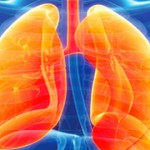A great deal of what is known about COPA comes from analysis of yeast. Randy Sheckman, PhD, of the University of California, Berkeley was awarded the Nobel Prize in Physiology or Medicine in 2013 for his discoveries of machinery regulating vesicle traffic. He identified a complex of three proteins that together attach to the surface of the endoplasmic reticulum. This attachment must precede budding of the membrane and the formation of transport vesicles. The complexes are known as coat protein complex I (COPI) and coat protein complex II (COPII). Thousands of these complexes coat the budding surface of a vesicle, creating a sac and recruiting the correct protein cargo. COPA represents a subunit of COPI and appears to be important in intracellular transport via COPI. Although COPII transports from the rough ER to the Golgi complex, COPI transports from the Golgi complex to the rough ER. The pathways have been fleshed out to some extent; however, most of the research has taken place in yeast, and the system has not been well studied in mammalian cells.
Once COPA had been identified as the relevant protein, the investigators measured COPA expression in the affected patients. They were surprised to discover that COPA was expressed at normal levels in these individuals. Recognizing the essential nature of the COPA protein for intracellular transport, Dr. Shum and colleagues next determined the functional consequence of the COPA variants. They hypothesized that the mutant COPA resulted in defective intracellular transport via COPI. This was supported by the observation that the COPA mutations seen in the patients appeared to render the protein dysfunctional. Further investigation revealed that the COPA variants impaired binding to proteins targeted for retrograde transport (Golgi-to-ER). Although the experiments stopped short of specifically demonstrating a trafficking defect, such a defect is the most likely explanation for the data.
Trigger of Autoimmunity
The investigators then sought to identify physiological effects of COPA variants that might link the mutation mechanistically with autoimmune disease. They performed dynamic functional assessments of patient-derived cells and found evidence of ER stress in patients with mutant COPA. In an attempt to understand the specific role of mutant COPA on ER stress, the researchers performed small interfering RNA (siRNA)–mediated knockdown experiments in human embryonic kidney (HEK) cells. The results confirmed the ER stress, but the investigators were unable to determine how the ER stress led to autoimmunity. Although the path to pathology has not yet been elucidated, the authors propose the possibility that the COPA mutation might compromise autophagy. The hypothesis stems from previous studies that have indicated an association between autophagy and autoimmunity.
Patients do not need to have a clear family history in order to indicate that a COPA mutation is important in their pathology.
The team next examined CD4+ T cells in individuals with mutant COPA. They found that patient-derived CD4+ T cells were significantly skewed toward the T helper type 17 (Th17) phenotype implicated in autoimmunity. Moreover, BLCLs derived from patients with mutant COPA showed significant elevations of transcripts encoding interleukin (IL) 1β, IL-6 and IL-23. Thus, faulty protein trafficking by mutant COPA resulted in cellular stress as well as upregulation of cytokines that triggered a Th17 response. The investigators hypothesize that such an impairment in the cellular trafficking may mean that misfolded proteins are being mistakenly released. It is possible that these misfolded proteins trigger an autoimmune response due to their cryptic nature.
Why the Lung?
The investigators do not have an explanation for why this mutation preferentially affects the lung. “That’s the big mystery,” noted Dr. Shum. “Why the lung? Why the joint?” COPA is ubiquitously expressed and so it seems strange that the autoimmune syndrome is restricted to the lung and joints. He hypothesized that cells in the lung and joint may be particularly dependent on the retrograde transport.



